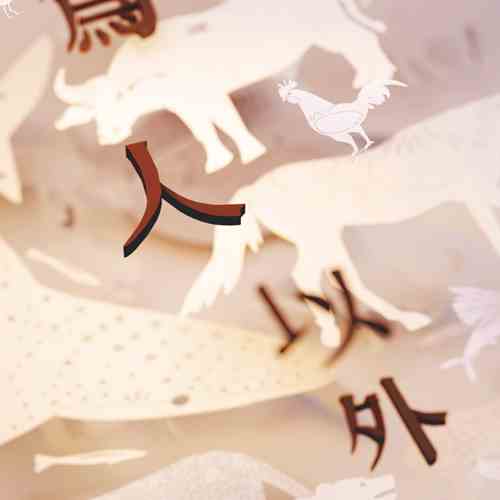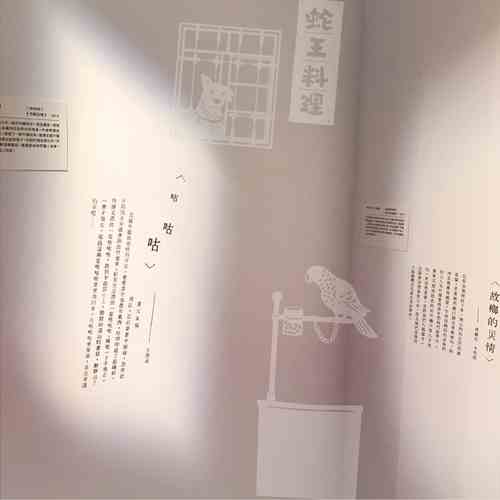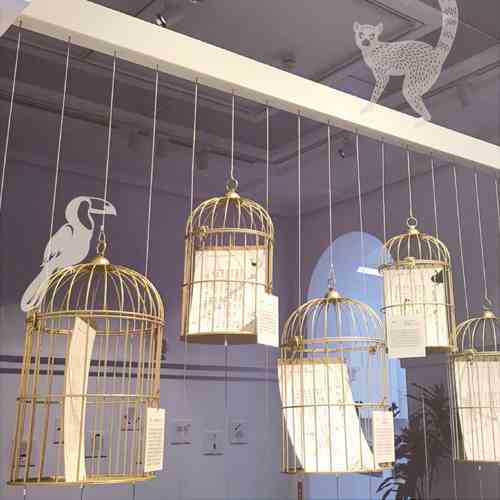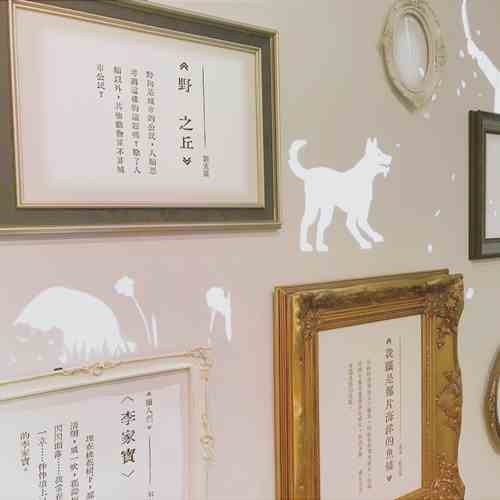The True Relation of Man and Beast|The Activists|Tales of the Hunt|Animals Front & Center: Nature as Man's Teacher
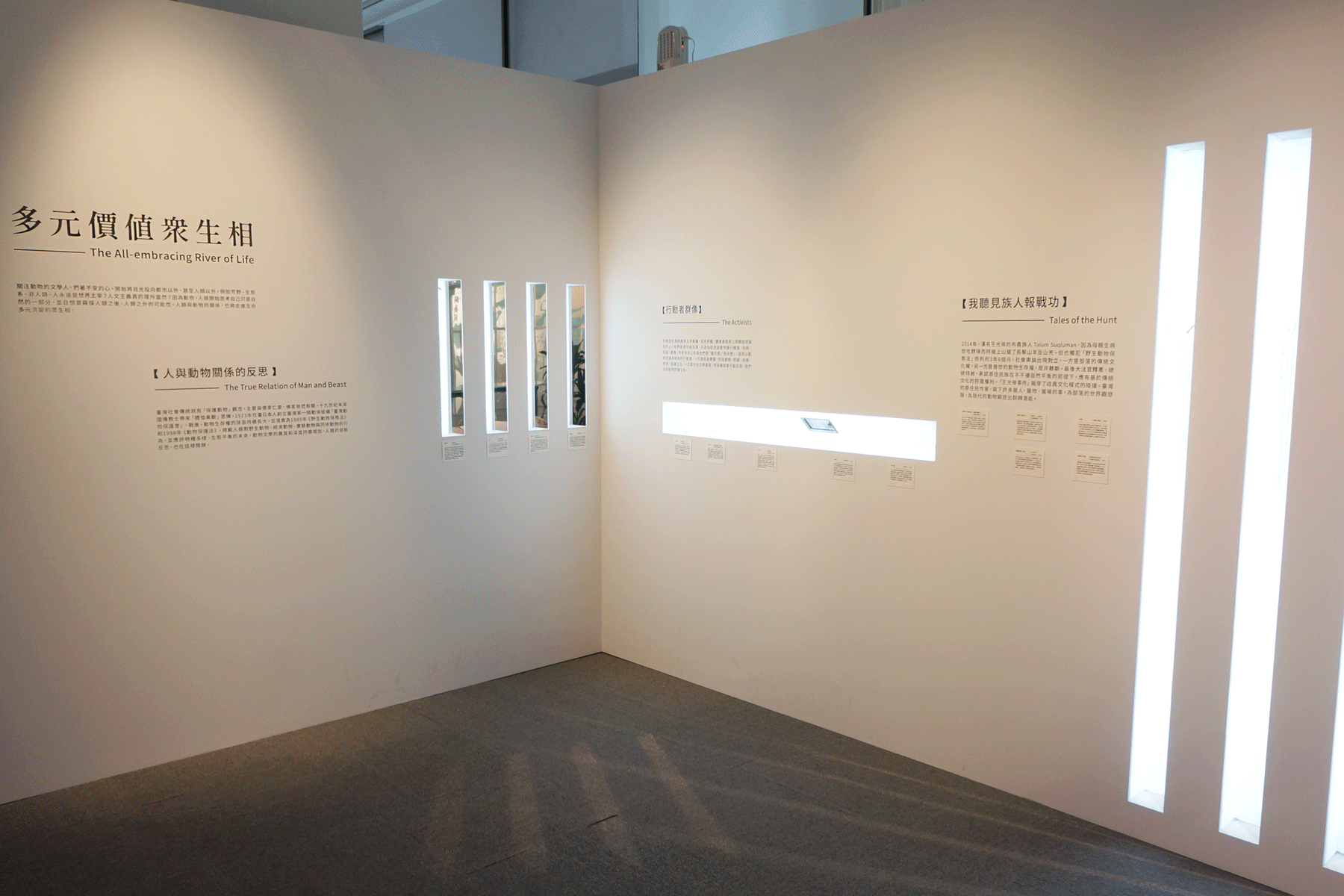
Authors weave animals into their narratives to give voice to their own sense of disquietude, stepping away from familiar concrete jungle symmetries into wild places, wildlife habitats, and other "non-human" spaces. Will humans forever be master of their domain? Will anthropocentrism always remain the presumptive norm? Animals teach us that we are a part of, not apart from, nature. They inspire us to ponder post-human and non-human potentialities. The relationship of humans and animals must necessarily intermingle and merge into the all-embracing river of life.
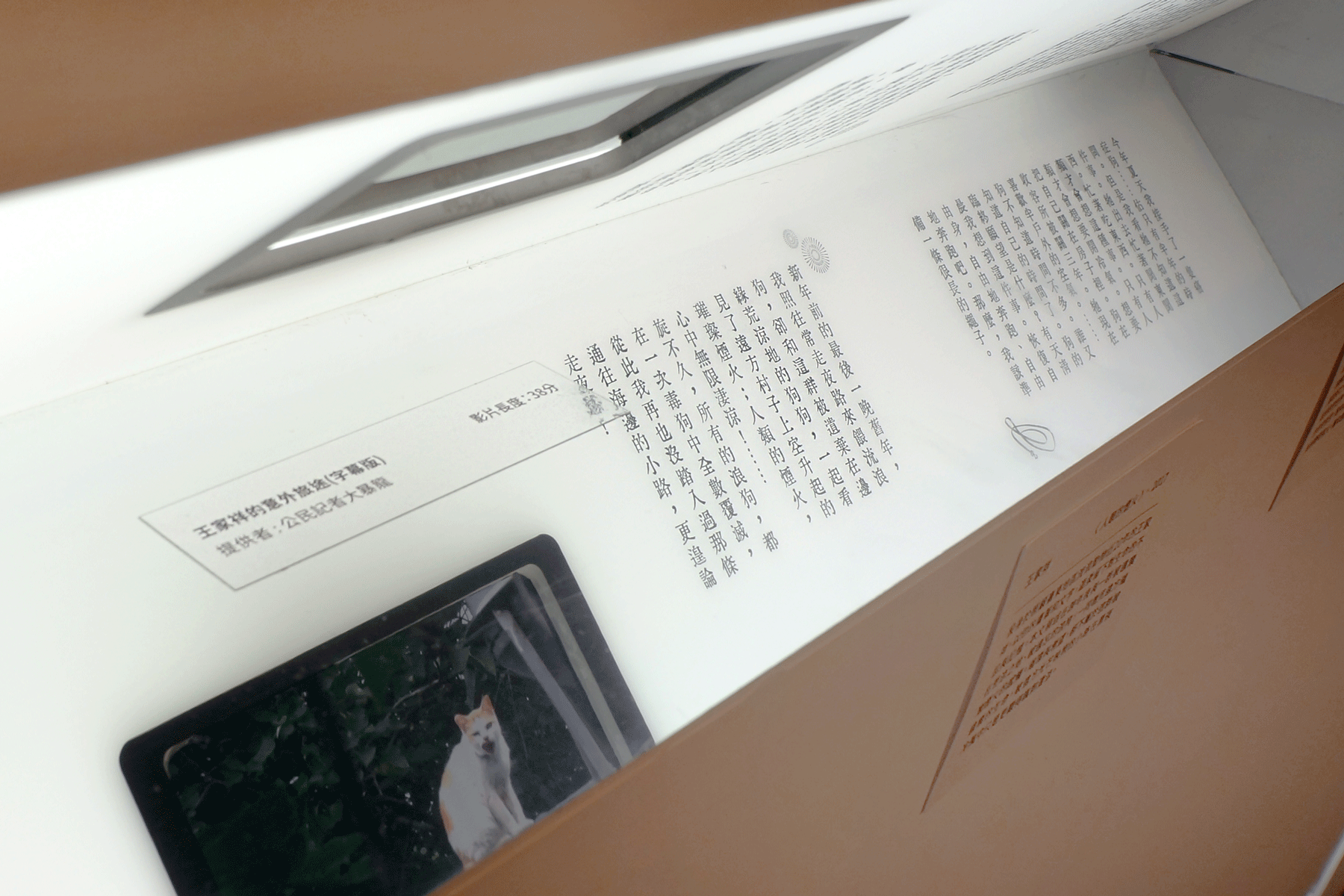
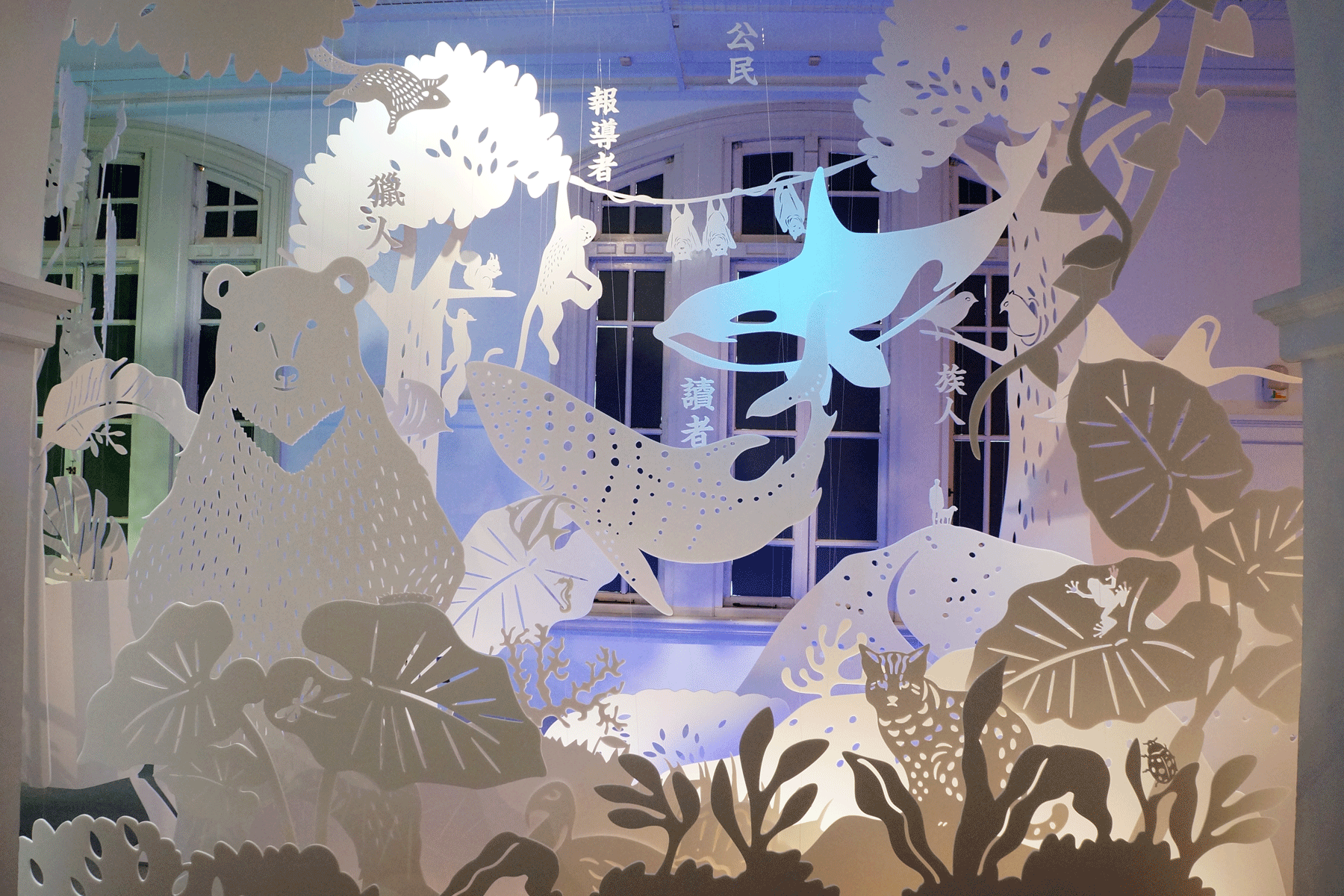
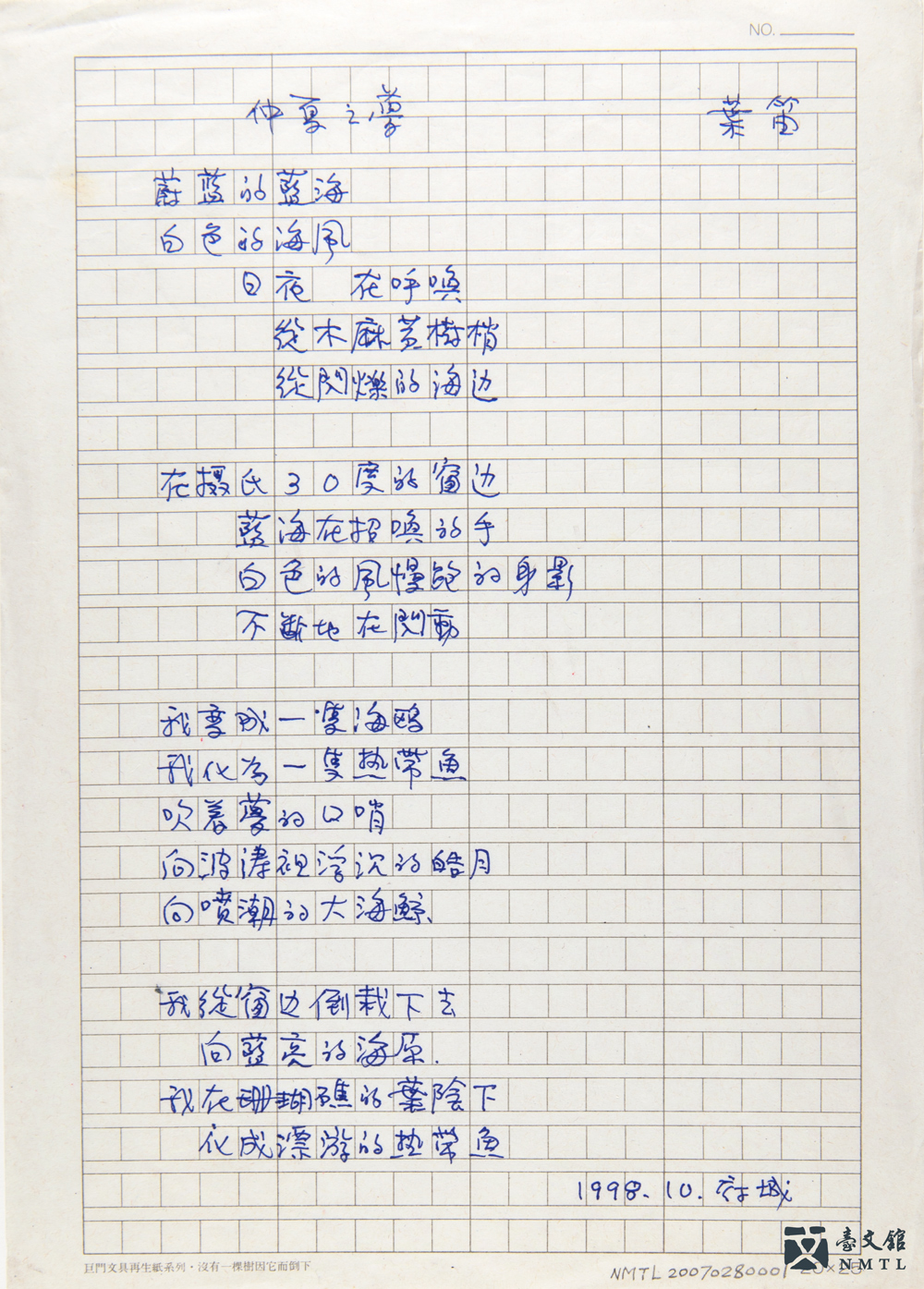
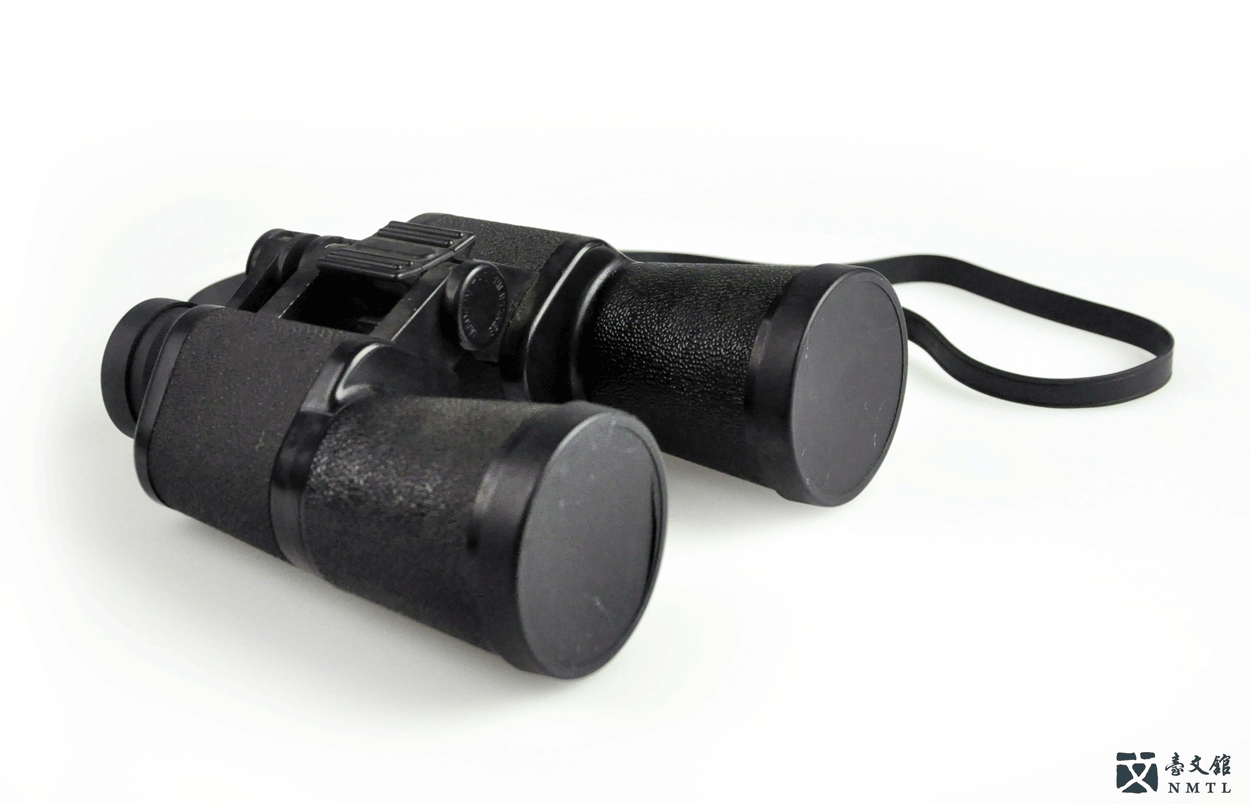
⁍ "The Midsummer's Dream" by Yeh Ti and the telescope
The poet from Fucheng wrote with a kind of warmth and ambiance that was true to everyday Tainan, and imagined himself as a seagull and tropical fish, roaming around in nature. Through this poem, one can see the poet's passion for the natural environment; furthermore, through the bird-watching telescope he left behind, it seems to offer the reader an insight into the poet's eyes and mind. (Donated by Yeh Chen-chen / From the National Museum of Taiwan Literature permanent collection)
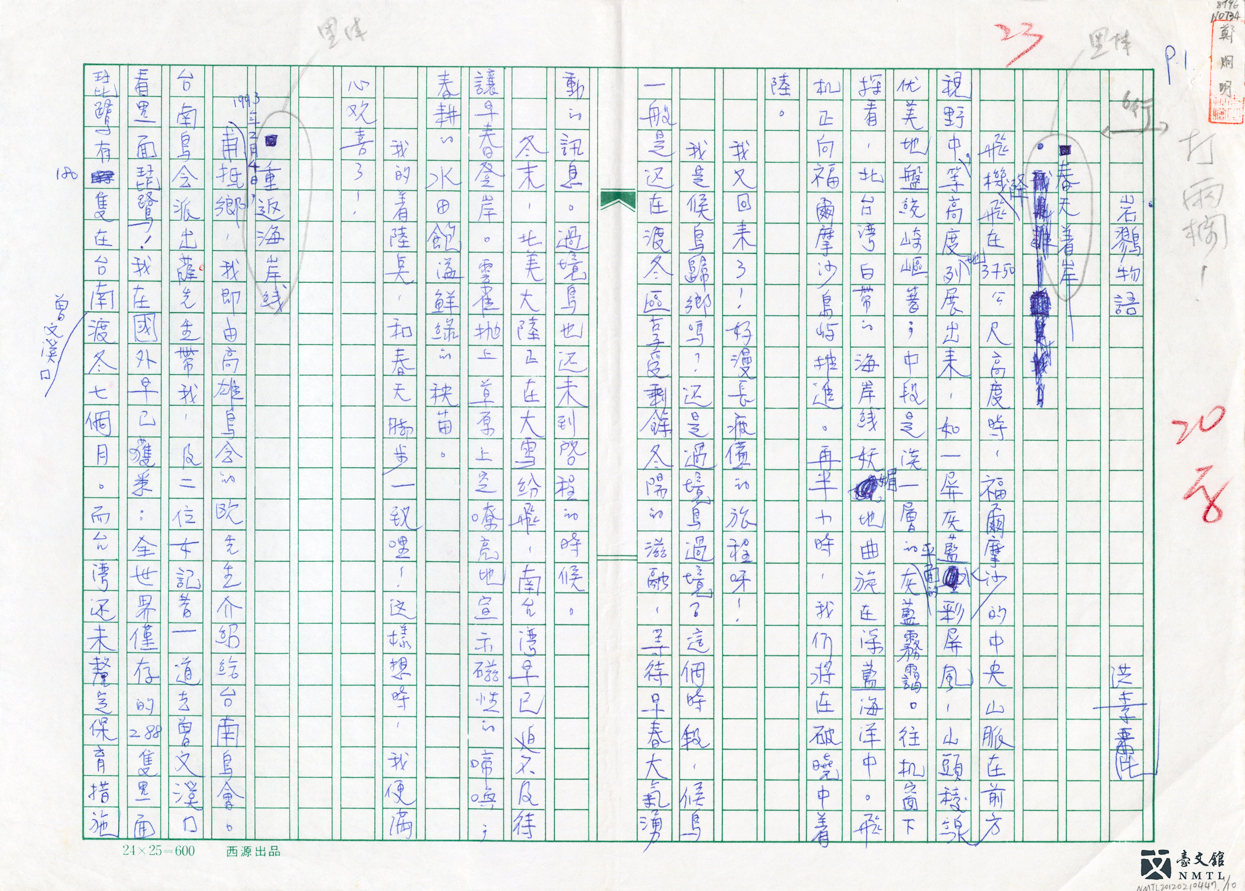
⁍ "The Story of The Rock Pipit", by Hung Su-li
This article is about the protagonist's bird-watching trip. It describes the unique natural ecological environment of birds in Taiwan, and mentions the characteristics of the black-faced spoonbills. It raises a point about Taiwan's environmental damage being caused by the excessive emphasis on economic development and frequent deforestation. In this story, the protagonist went with some friends to Yushan to visit a Bunun village and got to know the local people, which led to the beginning of a journey in pursuit of the rock pipit. (Donated by Literary Taiwan Magazine Publisher / From the National Museum of Taiwan Literature permanent collection)
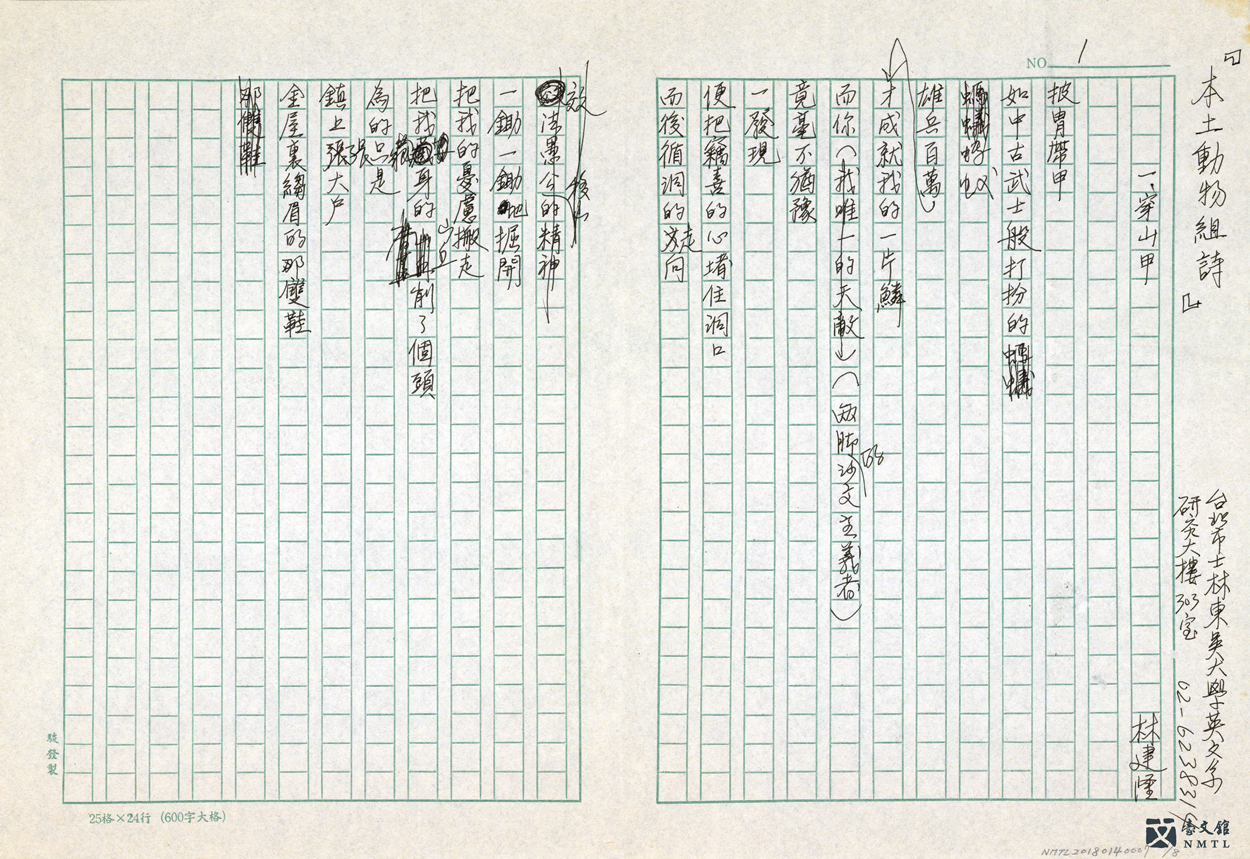
⁍ "A New Century for Animals: A Group of Poems about The Indigenous Animals", by Lin Chien-lung
This piece is part of the manuscript for the book A NEW CENTURY FOR ANIMALS - THE FIRST POEM COLLECTION IN TAIWAN LITERATURE, which was published in 1999 jointly by the author Lin Chien-lung and the Life Conservationist Association. The animals in "A Group of Poems about The Indigenous Animals" include pangolins, black bears, clouded leopards, civets, wild boars, and egrets, which are all representative animals of Taiwan. (Donated by Lin Chien-lung / From the National Museum of Taiwan Literature permanent collection)
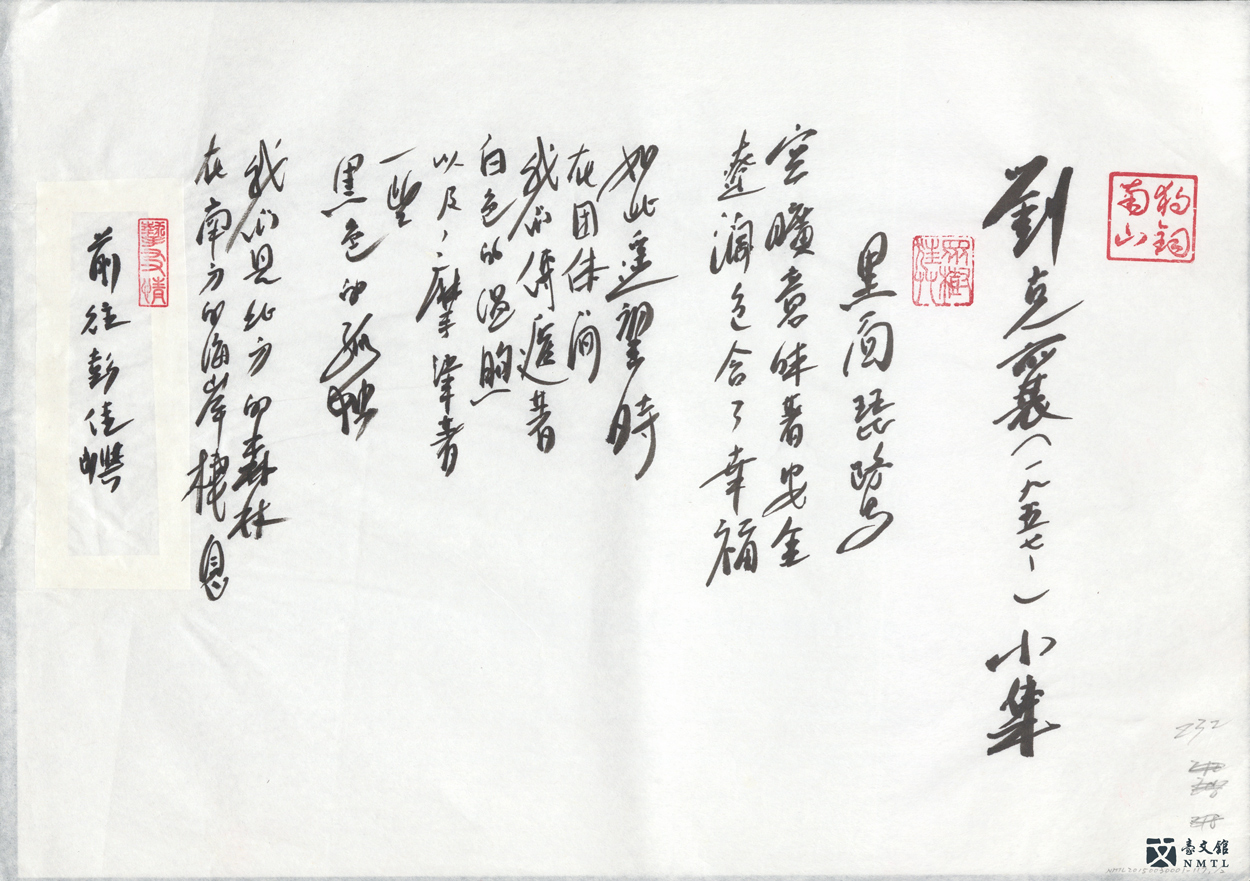
⁍ "Liu Ke-hsiang's Collection: Black-Faced Spoonbill", from Chang Mo's manuscript
This work is from part of the manuscript for HAND WRITTEN COPIES OF TAIWAN POETRY edited by Zhang Mo, and published by Chiuko Publishers in 2014. The content is Liu Ke-hsiang's poem "Black-faced Spoonbill", written in 1999, of which Chang Mo had hand-drawn impromptu in ink, and almost brought the black-faced spoonbill on paper to life. Poet Chang Mo and writer Liu Ke-hsiang are good friends who share a mutual concern for natural ecology. (Donated by Chang Mo / From the National Museum of Taiwan Literature permanent collection)
✧ The True Relation of Man and Beast
Early animal protection and welfare sympathies in Taiwan likely echoed traditional Confucian and Buddhist values. English missionaries working in Taiwan in the 19th century preached the value of compassion toward animals. Japanese residents in colonial Taiwan founded the island's first animal protection organization, Taiwan Dōbutsu Hogo Kai (Taiwan Animal Protection Society), in 1923. Growing societal support for animal protection and rights in postwar Taiwan led to passage of the Wildlife Conservation Act in 1989 and Animal Protection Act in 1998. These acts regulate human activities with regard to wildlife, economic animals, animal experimentation, and companion animals, and build a framework for the long-term preservation of biological diversity and equity. Animal literature has continued to expand in both breadth and depth and continues to give readers plenty of introspective "food for thought".
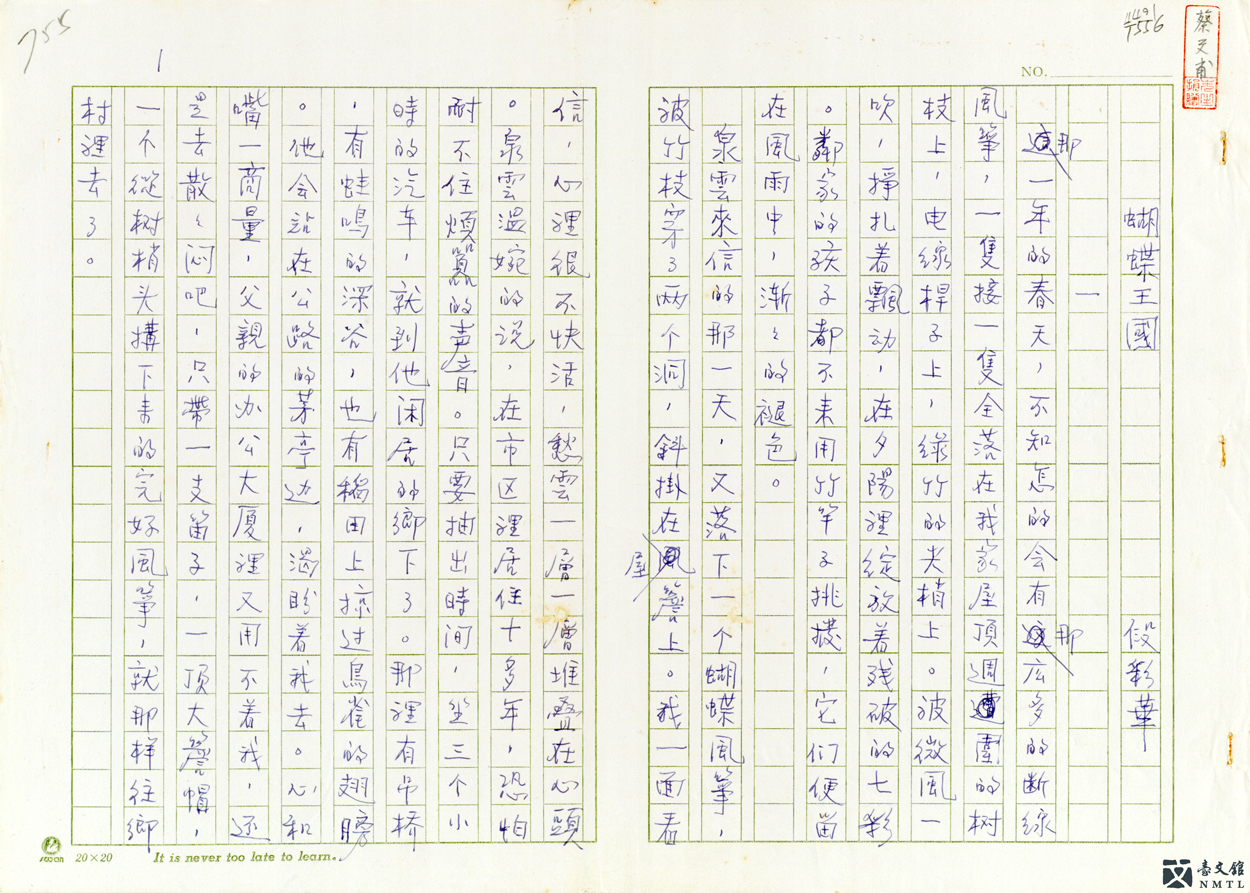
⁍ "The Kingdom of The Butterflies", by Tuan Tsai-hua
Tuan Tsai-hua advocated the conservation of butterflies through this work. It mentions the butterfly art and taxidermy that were a popular Taiwanese export in the past. From Taiwan's celebrated fame as "Kingdom of the Butterflies", through the migration route of the butterflies and the butterfly valleys spreading across the north, central, and south of Taiwan, to the destruction of the ecological environment, the author has tried to be vigilant and propose solutions. (Donated by Tsai Wen-fu of the Chiuko Publishers / From the National Museum of Taiwan Literature permanent collection)
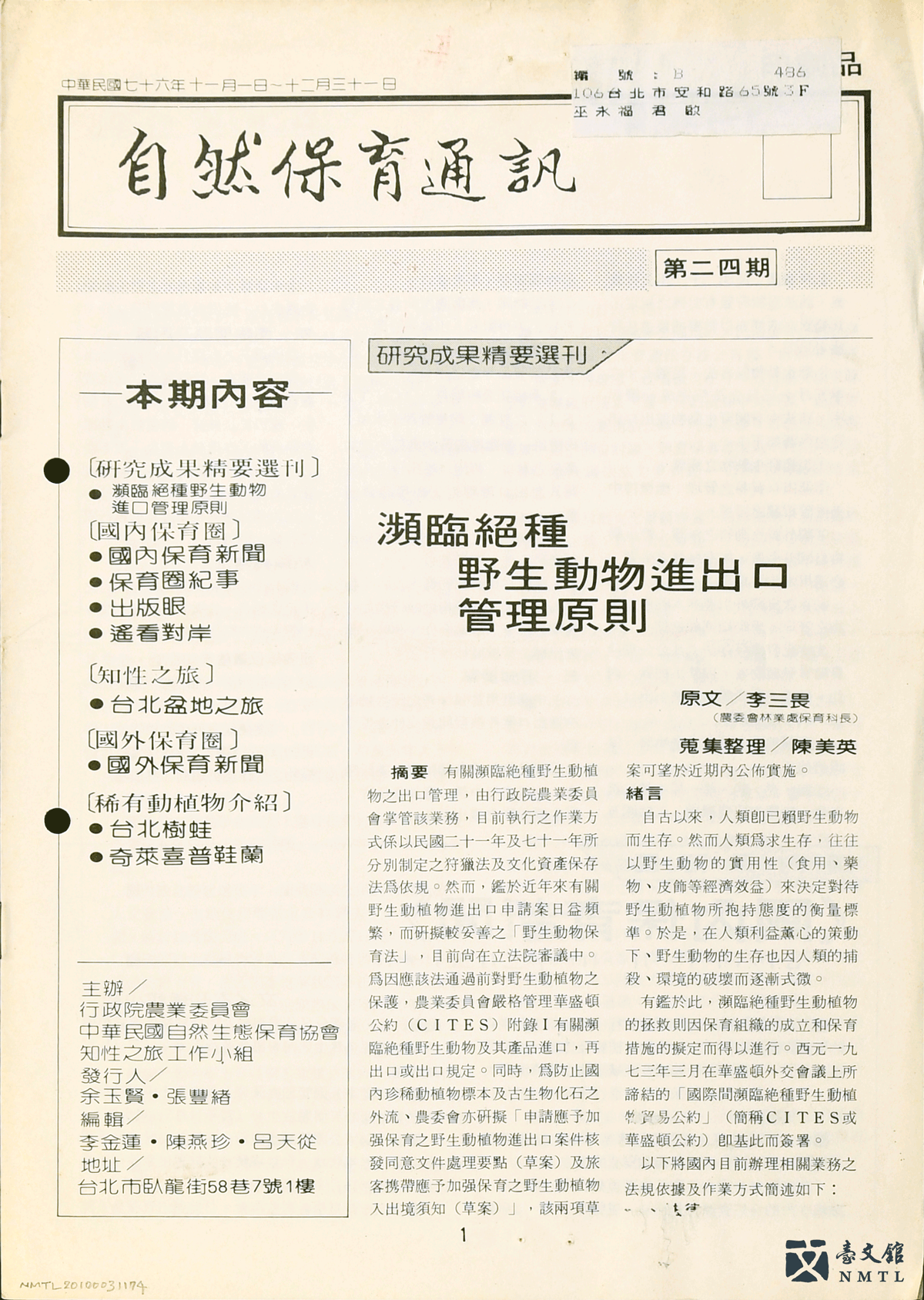
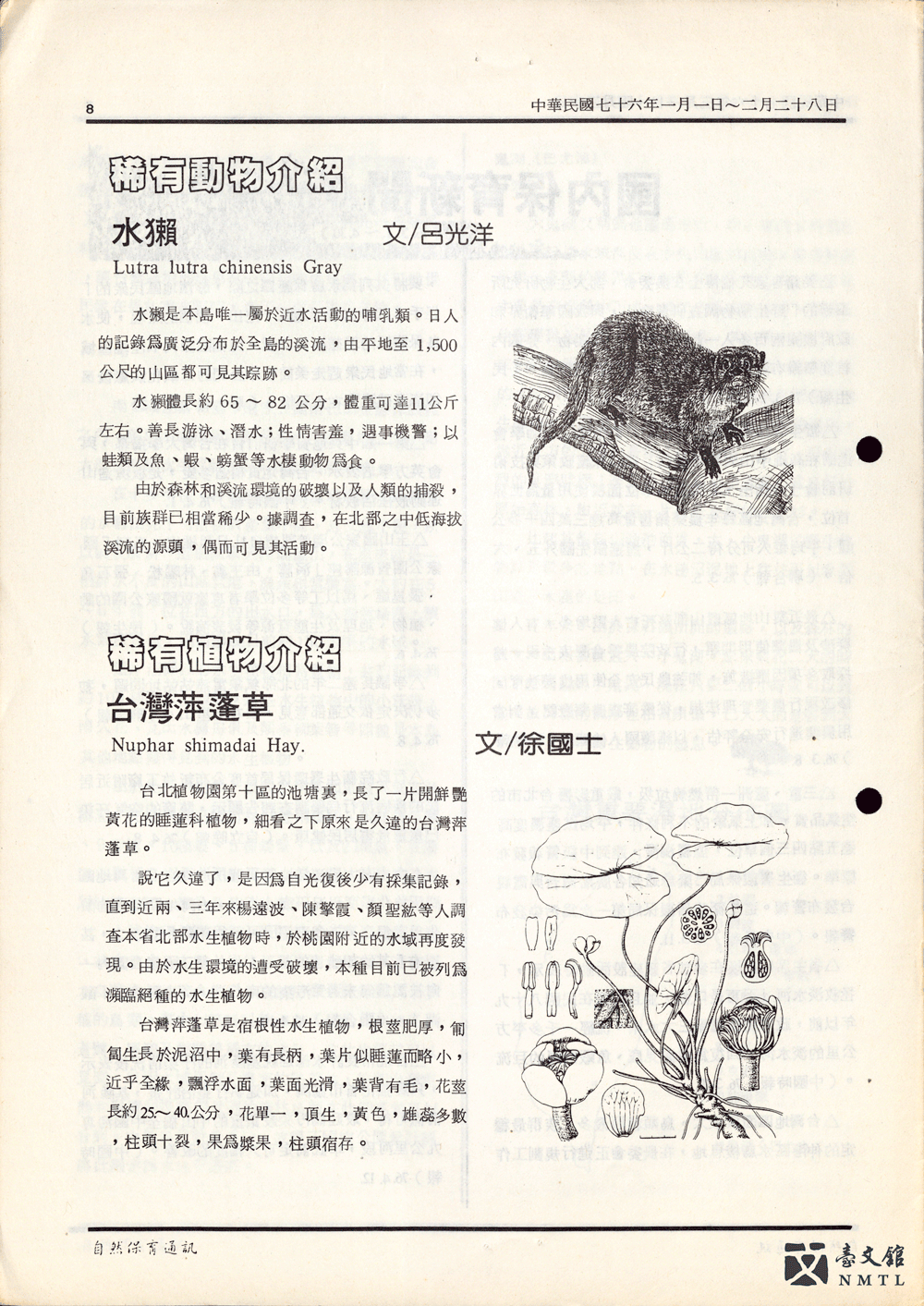
⁍ NEWSLETTER ON THE CONSERVATION OF NATURE, Issues 14 & 24
The journal NEWSLETTER ON THE CONSERVATION OF NATURE was monthly published by the Society for Wildlife and Nature as commissioned by the Executive Yuan's Council of Agriculture. The content of the journal includes global and local ecological conservation news and sharing of cases for reference. It also has graphic introductions to promote the understanding of Taiwan's endemic species, covering a range from rare animals to plants. It can be regarded as the first official journal with a focus on natural ecology. (Donated by Taipei City's Wu Yung-fu Cultural and Educational Foundation / From the National Museum of Taiwan Literature permanent collection)
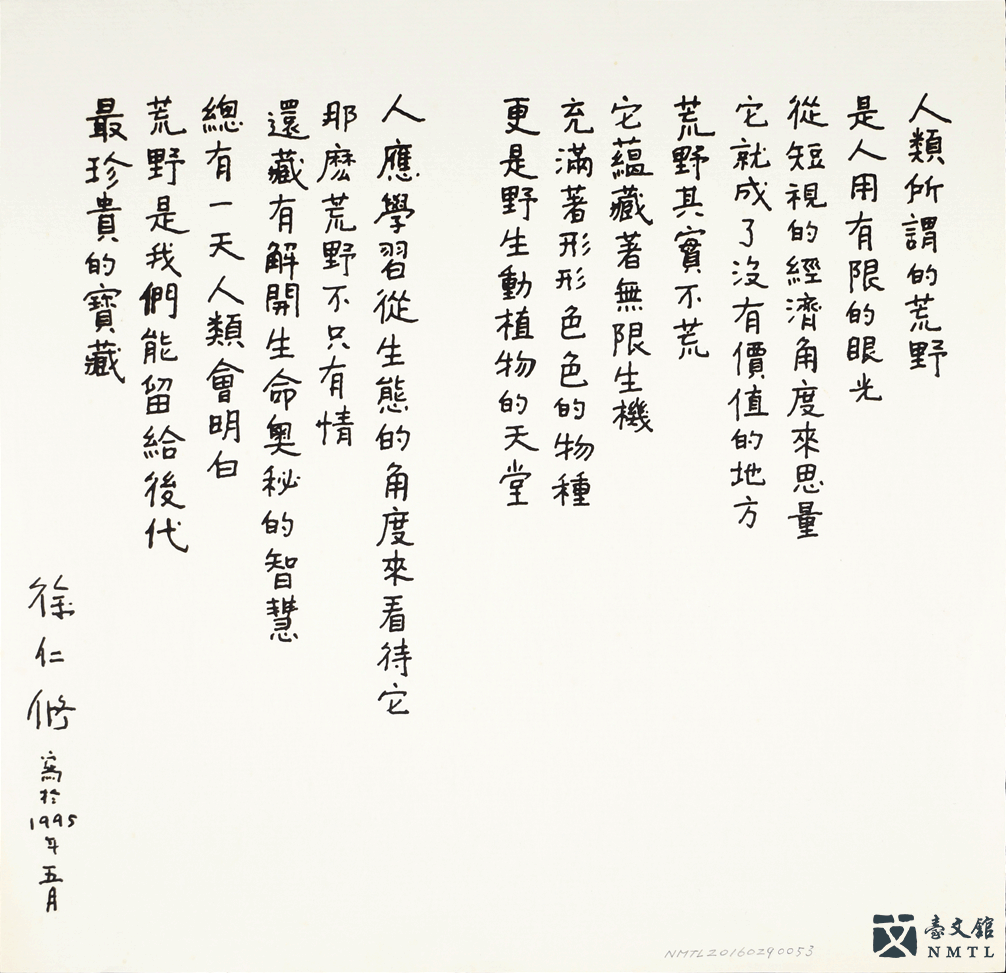
⁍ Hsu Jen-hsiu: The alleged wilderness of mankind...
This short poem was written on June 25, 1995, when Hsu founded the Society of Wilderness. The poem gives us insight into his ideas towards the natural ecology, his core principles, and his vision as the Association's Founding Chairman. Hsu graduated from Pingtung Agricultural College, where he had researched agriculture and Taiwan's endemic animal and plant species. This poem is full of his profound thoughts on the humanities and the land. (Donated by Hsu Jen-hsiu / From the National Museum of Taiwan Literature permanent collection)
✧ The Activists
Have you ever encountered people at night looking high and low for stray dogs and cats? Individual animal welfare activists across Taiwan give of their time to find and help strays in need of medical assistance, food, and affection. Author Chu T'ien-hsin calls them the cat & dog "angels". They serve as the frontline volunteers, watching over, caring for, adopting, rescuing, and advocating for stray animals, as well as the narrative voices of the cause, writing stories and documenting the experience of abandoned companion animals to help us all become more empathetic and appreciative of life.
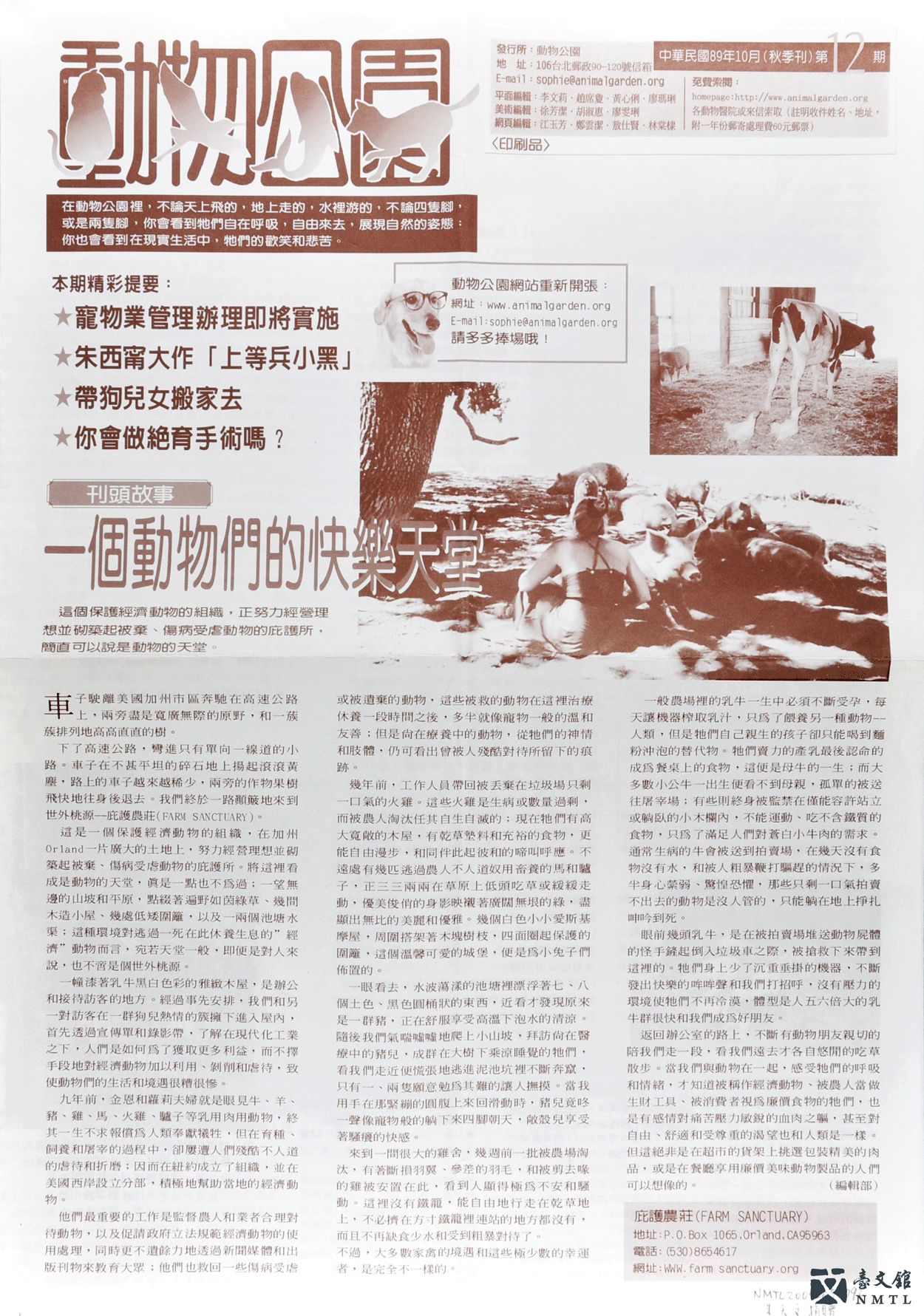
⁍ THE ANIMAL PARK, Issue 12
Published by "The Animal Park" in 2000, it was edited by Li Wen-li, Chao Hsi-chiung, Huang Hsin-li and Liao Ma-li. Among the contemporary publications of the period, its content was focused on concern for stray animals and pets. In this issue, there is a featured article "1st Class Soldier – Lao Hei (1)" by Chu Hsi-ning (the title appearing on the cover had been mistakenly printed as "Hsiao Hei"). (Donated by Chu Tien-wen / From the National Museum of Taiwan Literature permanent collection)
🎬 The UNEXPECTED JOURNEY OF WANG CHIA-HSIANG (subtitled version)
Wang Chia-hsiang was previously the Editor of the supplement of the TAIWAN TIMES. He also worked as a professional painter for three years and moved to live in the eastern area afterwards. He is a loving father and has adopted more than 100 stray animals. He expresses his life in the eastern area through paintings, showing the relationships among human beings, animals and the environment. He also sells his paintings to raise funds for the caretaking of stray animals. This short film is the writer's life record and interview report in the eastern area. (Provider: T-Rex, reporter of the PeoPo Citizen Journalism)
✧ Tales of the Hunt
In 2014, Talum Suqluman, an indigenous Bunun Taiwanese, hunted down a Taiwan serow and muntjac to feed his sick mother. For this violation of the Wildlife Conservation Act, he was sentenced to three-and-a-half years in prison. This incident turned a spotlight on an inherent conflict between traditional indigenous rights and animal rights that had no easy solution. After a constitutional interpretation by the high court and a special pardon by the President, the decision was made to recognize indigenous hunting rights as long as the ecological balance is preserved. The so-called "Talum Suqluman Affair" was a true clash of cultures. Indigenous author writings on hunters, the hunted, and hunting grounds give a voice to tribal priorities and heritage and add a new twist on Taiwan's contemporary perspective on animals.
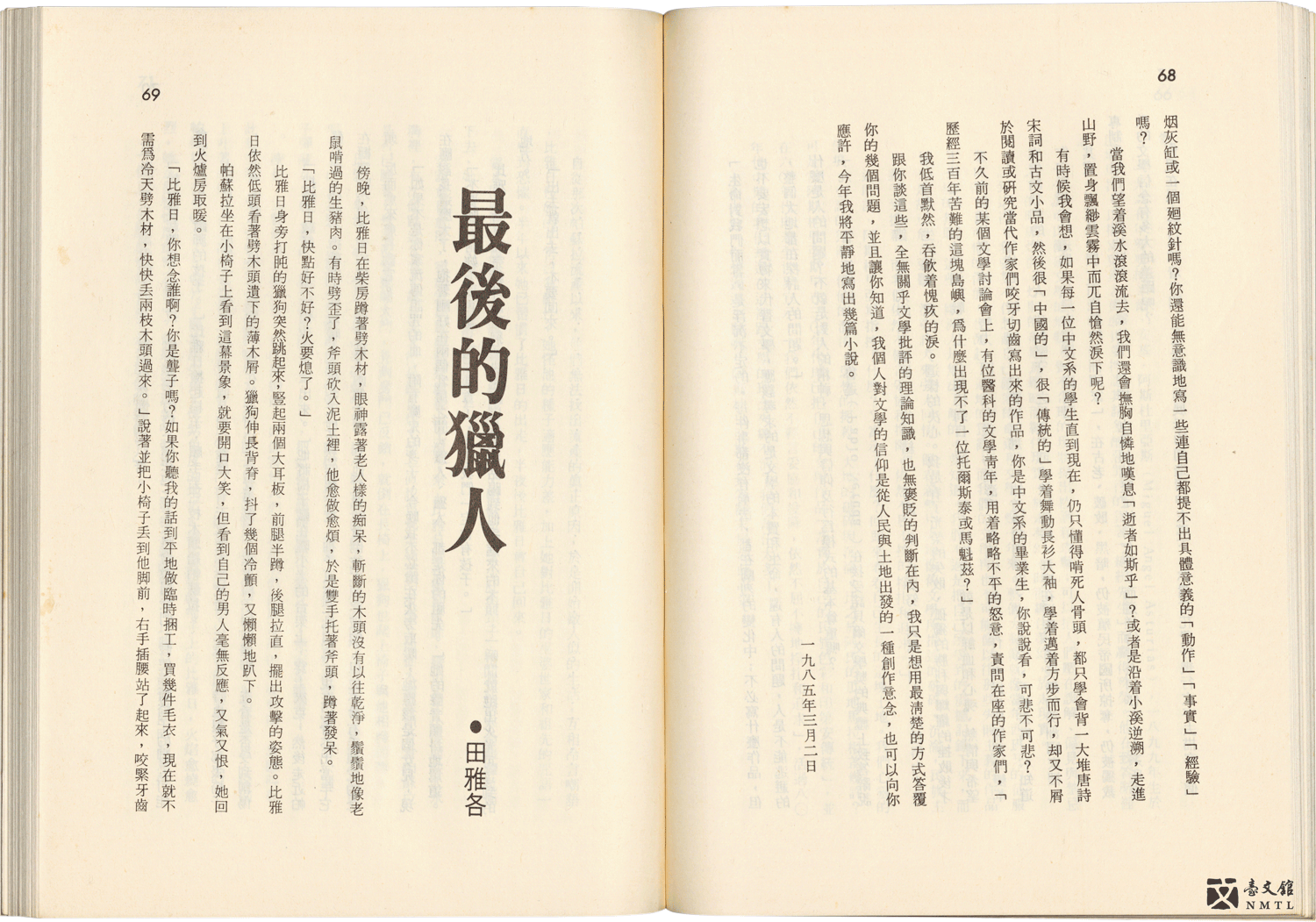
⁍ "The Last Hunter", by Topas Tamapima
This work was first published in the 93rd issue of TAIWAN LITERARY ARTS. The story is about Biyari, a brilliant hunter from an indigenous tribe; he went hunting in the mountains because of poverty. However, due to regulations over hunting activities and the ownership of guns, the police confiscated all the hunted meat in the end. The phenomenal scenery among the mountains of the tribe is detailed between the lines, while the writer also vividly presents how the indigenous peoples were being suppressed by modern civilization. (Donated by Taipei City's Wu Yung-fu Cultural and Educational Foundation / From the National Museum of Taiwan Literature permanent collection)
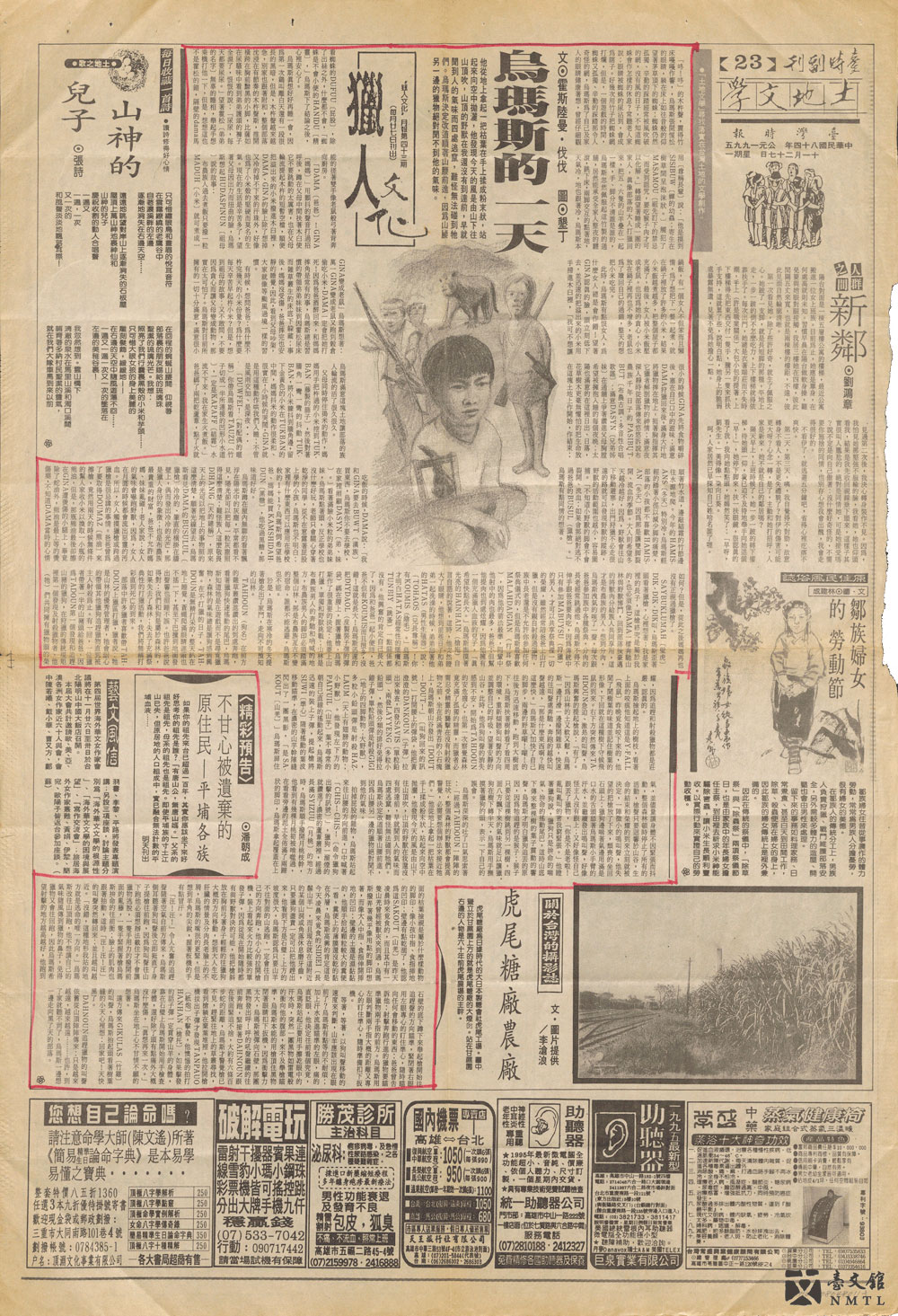
⁍ "A Day for Umas" by Husluman Vava
This is the author's first short story published in the TAIWAN TIMES in 1995, and subsequently included in the book THAT YEAR WE WORSHIP OUR ANCESTRAL SPIRITS. Through the innocent eyes of a young boy, this work brings out the culture and spirit of the Bunun. Umas, the story's protagonist, later became the protagonist of the author's full-length novel THE SPIRIT OF YUSHAN. (Donated by Husluman Vava / From the National Museum of Taiwan Literature permanent collection)
⨈⨈⨈ ⨈⨈⨈ ⨈⨈⨈
✦ Animals Front & Center: Nature as Man's Teacher 𓃠 𓆱 𓃦 𓅯
Animal rights is a concept widely acknowledged in today's Taiwan, and public support for sustainably balancing animal welfare against anthropocentric needs and desires is growing. Taiwan's animal literature has amply illustrated civilization's burden on animals and highlighted the violence inherent in our laws and civil structures. Many writers of animal literature not only mull over the implications of anthropocentrism but also advocate for eco-environmental ethics and the preservation and protection of life's core values.

